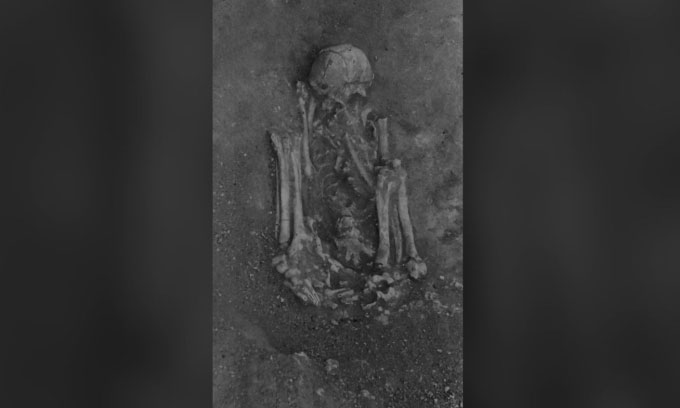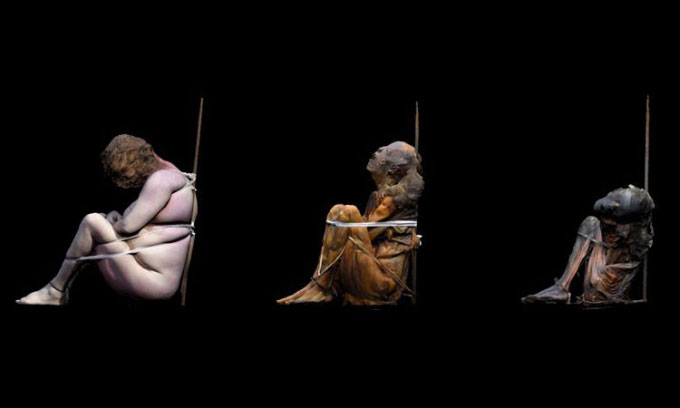Unpublished Photos of Portuguese Archaeologist Reveal the World’s Oldest Mummified Remains.

Photo of one of the excavated skeletons in the Sado Valley shows that this individual was mummified before burial approximately 8,000 years ago. (Photo: Peyroteo-Stjerna et al/European Journal of Archaeology)
In the 1960s, archaeologist Manuel Farinha dos Santos photographed several 8,000-year-old skeletons buried in graves discovered in the Sado Valley in southern Portugal. A new analysis of these photographs suggests that the oldest mummies of humans may be located in Europe rather than Egypt or Chile, as reported by Live Science on March 15. This research was recently published in the European Journal of Archaeology.
In the new study, the research team re-examined Farinha dos Santos’s documentation and discovered black-and-white photographs of 13 graves from the Middle Stone Age. Some documents and hand-drawn maps of the site in the Sado Valley are preserved in the National Archaeological Museum in Lisbon, but these photographs had never been published. They provide a valuable opportunity for archaeologists to study the graves, according to Rita Peyroteo-Stjerna, a bioarchaeologist at Uppsala University and the lead author of the new study.
After using the photographs to reconstruct the graves, the team of experts found that the arms and legs of one skeleton were pulled into positions beyond their natural limits. This indicates that the deceased had been tightly bound with cords that have since disintegrated. Additionally, fragments of bone remained connected after burial, including very small foot bones that typically separate during decomposition.
There were no signs that the soil of the ancient grave had shifted as the soft tissues of the body decomposed (the process of the body shrinking in volume would cause surrounding sediments to fill in exposed gaps), meaning such decomposition did not occur.
All these signs suggest that the individual was mummified after death. According to Peyroteo-Stjerna, it is likely that the deceased’s body was dried out and then gradually shrunk by tightly wrapping cords around it.

Archaeologists believe the deceased became a mummy after being bound and dried for several weeks to make it easier to transport. (Photo: Peyroteo-Stjerna et al/European Journal of Archaeology)
The study of these ancient graves also relied on findings from decomposition experiments conducted at the Forensic Anthropology Research Facility at Texas State University. These experiments indicate what ancient peoples might have done when mummifying the dead in the Sado Valley.
It is likely that they bound the deceased, placing them on a raised structure, such as a platform, to allow decomposing fluids to drain away and avoid further contact with the body. Additionally, ancient peoples may have used fire to dry the body and gradually tightened the bindings over time, preserving anatomical integrity while increasing the flexibility of the limbs.
Researchers suggest that some skeletons may have been transported from elsewhere to the Sado Valley for burial. If so, mummification—making the corpse smaller and lighter—would facilitate the transport process, according to Peyroteo-Stjerna.
The mummies in Portugal are the oldest mummies ever discovered in the world, surpassing the previous record held by the mummies in the Atacama Desert, Chile, by about 1,000 years. However, it may not hold this title for long as new analytical technologies, like those used in Peyroteo-Stjerna’s research, are applied to verify mummification traces dating back 10,000 years in Israel and 30,000 years in Belarus.


















































